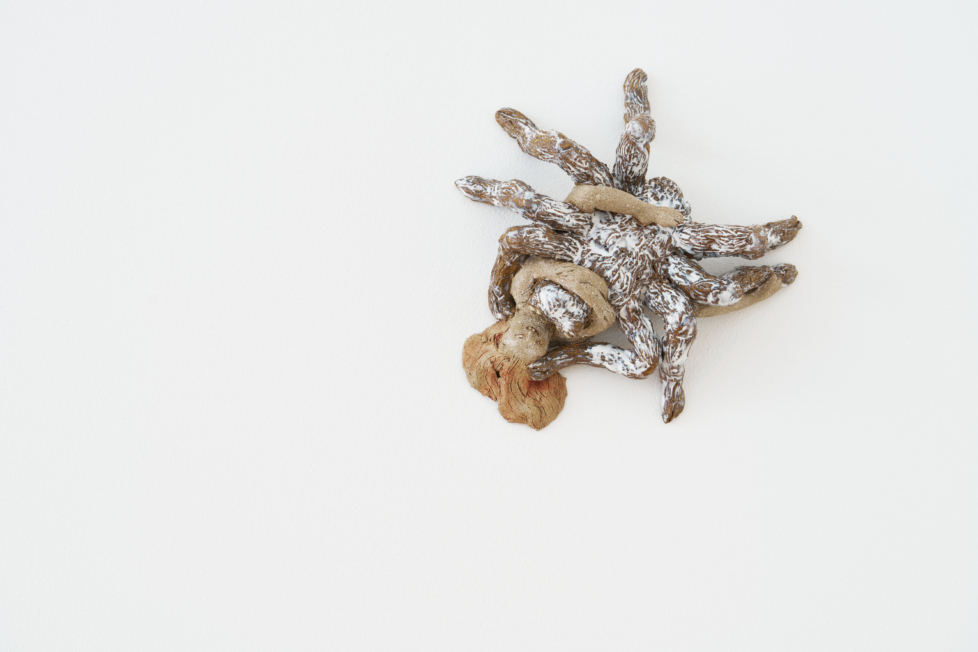
Susanne Winterling er kendt for sine fortættede, hermetiske scenarier opbygget omkrig en omhyggelig sammenstilling af objekter, fundne billeder og filmoptagelser. Resultatet er en særlig undvigende stemning, som rummer en form for intimitet, der er svær at definere klart – ikke mindst fordi Winterling bevidst arbejder med at sløre forholdet mellem dokumentation og fiktion, mellem fundne objekter og egentlige konstruktioner.
Winterling udforsker ofte liv og praksis hos andre kvindelige kunstnere eller arkitekter fra en tidligere, fortrinsvist modernistisk, generation. I hendes bidrag til den 5te Berlin Biennale i 2008 tog hun udgangspunkt i biografien omkring arkitekten Eileen Gray og behandlede Grays personlige og professionelle kamp (især i forhold til le Corbusier) inde i de særlige garderobe-rum på Neue Nationalgalerie (tegnet af en anden mesterarkitekt, Mies van der Rohe). Ved hjælp af sådanne «kvinde-til-kvinde genealogier» leverer Winterling materialet til at ‘skabe historie’ og giver beskueren mulighed for at tegne et slags portræt eller mulig identitet, også selvom de mange lag af betydning og gestus i sidste ende ikke gør det muligt at lokalisere en endelig konklusion.
I udstillingen på Fotogalleriet, Complement for Company (skyline and skin), udforsker Winterling forholdet mellem det fotografiske billede, det erfarede rum og subjektivitet sådan som det har udspillet sig i kølvandet på modernistisk teori angående såvel arkitektur som visuel perception.
Susanne Winterling er født 1971 i Rehau/ Oberfranken. Hun er fornyeligt udpeget som professor for film, video og fotografi på Kunstakademiet i Oslo. Dette er den første solopræsentation af hendes arbejde i Norge.
Kunstkritikk har stillet Susanne Winterling vores 10 faste spørgsmål per email. Vi vælger at trykke svarene på originalsproget.
(Read this introduction in English here.)
1. How are the preparations for your upcoming show at Fotogalleriet going?
Little steps, there’s always something new…Many stories, little disasters, amazing people. Installing is also very often like a film set, especially with site-specific, new work: regardless of how well you have worked everything out in your studio, with a model and floor plan, the place, the people, change things…
2. What do you consider the most important aspect of this exhibition?
Are you trying to frame it??? You just have to experience the space as photographic paper. The gray room will only give hints here: the relation of the experience of the space and its interventions to vision and perception, parts of the photographic process taken apart and rearranged, traces of light and traces of touch on photographic paper that will go on changing as it is exposed to light and not fixated, the urban space and its image as surrounding, maybe grassroots politics, a focus on the perception as a process in relation to the space of Fotogalleriet.
3. When, How and why did you become an artist?
For a while, I tried not to become one but it didn’t work out, I guess.
4. How do you see your role as an artist today?
I want to take the «your» out of this question… But creating an awareness would be the answer, in general—a vision and sensibility that can use different means, different realms of context, by throwing light on imbalances due to structures of power, illusion, beauty and perception.
5. How would you describe your working method?
Hmmmmmm…dedicated, analytical, poetical, critical, passionate, slow. Perhaps it’s related to something like Situational Aesthetics, and very much grounded in film – all its aspects, material, history, expanded in space and light and photography.
I’m a bit of a workaholic, I guess. And for a long time I’ve been living a nomadic life, dreaming of a house.
6. Can you mention current art or projects/practices that inspire you?
I guess there are always my few classics. But for the time being there is Beginning Good. All Good – an updated version of the futurist opera Pobeda nad solncem (Victory over the Sun) by Welimir Chlebnikow, Alexeij Krutschenych, Kasimir Malewitsch, and Michail Matjuschin, which premiered in Saint Petersburg in 1913. Since 2008, an ever-expanding group of around thirty-five international artists, musicians, architects, and authors have, in an ongoing project consisting of exhibitions, performances or publications, been considering how to translate this almost one-hundred year old material into contemporary terms. (http://www.aktualisierungsraum.org/agag/) Also the book Deutschland hysterisieren by Manfred Hermes on Fassbinder’s Berlin Alexanderplatz comes to mind right away.
7. What role does theory play in your work and what theorists have inspired you lately?
I wouldn’t use the word «role»; its a different thing. But it has always been important in terms of finding soulmates. The same goes for music and literature. Political theory and philosophy has always been more important than art theory to me. And recently I’ve been into a lot of architectural theory: Beatriz Colomina and Marc Wigley have, for sure, opened up my mind—as have Luce Irigaray, Eve Kosofsky Sedgwick and Paolo Virno, in the past. Phenomenology is always the base. Lately, however, I have been reading Chris Kraus, and environmental as well as urban theories.
8. How can visual artists make a living and still maintain a critical attitude towards the commercial art market and governmental funding bodies?
Very difficult question…I might not be good in talking about a compromise…a question of priorities…stay true to your vision and soul as well as soulmates.
9. How can we theorize and historicize contemporary art?
Not so sure if we can…can we get out of our own skin??? Surely there are interesting attempts.
10. What would you change in the world of art?
Power to the people…Maybe first do away with the underlying class structure in a global way.


















